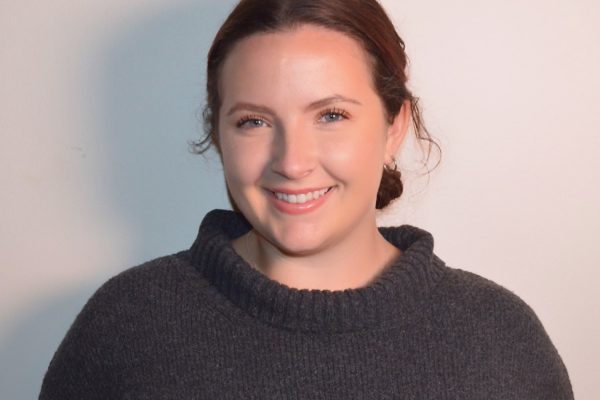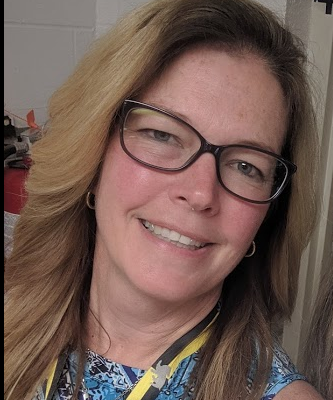We summer staff watch the annual building renovations with excitement and apprehension. Will all of these new “improvements” work like we hope they will? Will they be finished in time? Will our staff like them?
As we enter the last two weeks before school starts, we find ourselves wondering the same things about our new technology initiatives. For the most part, summer technology prep is about refining what worked from previous years and improving what didn’t. Much time is spent on tweaking the computer images so that teachers are comfortable navigating, ordering more wireless access points to fill in holes in the network, increasing bandwidth, and more of the same.
It’s a great feeling to help prepare a “just right” educational environment in which teachers can practice their art. But helping to shape this environment isn’t simply about refinement; sometimes it’s about trying something new. Much like our summer building construction, this is where both excitement and apprehension come in.
This summer we are excited about two new tools our teachers will be employing to assist their instruction in the classroom: Apple’s iBooks Author (apple.com/ibooks-author) and Thalmic Lab’s Myo (thalmic.com/myo).
iBooks Author is a free program offered on OS 10.7 and later that allows “anyone to create beautiful Multi-Touch textbooks for iPad.” This tool will become even more useful in the near future when Apple releases the iBook app for its computer OS. This means that whether teachers use an iPad or laptops as their go-to computing device, they will be able to share their carefully designed eBook creations with students. Originally, our intention was for teachers to employ this great tool to create rich lessons teeming with images, movies, and authentic text. However, it became apparent early on in our summer trainings that what teachers were most excited about was the ability to produce student work with the tool.
In typical classrooms, iPads are used to find information and utilize educational applications. This year, iBooks Author will allow us to utilize our iPads as publishing tools. In the past, teachers have had students type their work before printing final drafts. With iBooks Author, students can turn out a polished product and read it in a fashion more comparable to how a majority of Americans read—on a tablet.
The consensus among our teachers was that iBooks Author would be a fairly student-friendly tool with an interface similar to other native applications. Many feel that the program will be easy to integrate into existing curricula. For example, students can type personal narratives or persuasive essays into Microsoft Word just as they are used to, and then iBooks Author will seamlessly insert the document in a chapter format of their choice. Our teachers believe that the ability to add multimedia while using a familiar, easy-to-use process and tool will interest students and provide them with incentive to complete their writing assignments.
The Myo is an alternative input device that “lets you use the electrical activity in your muscles to wirelessly control your computer, phone, and other favorite digital technologies.” We have historically favored the use of Apple’s mirror technology (to AppleTVs) in lieu of buying expensive and bulky interactive whiteboards, and the Myo moves us another step closer to a hands-free classroom. Imagine a rich multimedia lesson where the teacher wasn’t tied to the whiteboard and didn’t have to carry a device around the room—all for under $300 per room (AppleTV and Myo). Instead, the teacher wears the myo on his or wrist and is able to manipulate content on their machine from anywhere in the room.
The one-to-one laptop program begins in the Fourth Grade at our school. In these classrooms it is crucial that teachers model both procedure and product of the classrooms. It will be in these rooms that we will pilot the use of the Myo with our AppleTV/Elmo document camera carts.
While using the Myo, the Fourth Grade teachers will be able to walk around the classroom and interact with their computers from afar. They will be able to open and manipulate applications all with the flick of a wrist. They will be able to flip through presentations from anywhere in the classroom while monitoring students. When transitioning from one subject area to the next, they will be able to switch applications with a simple hand movement. One teacher commented that finally, the technology in her classroom would be able to transition as smoothly as their students.
Our staff is very excited about using both the Myo and iBooks Author tools in the coming school year, though questions remain. Will these pieces of technology work like we hope they will? Will prep for the two pilots be finished in time? Will our staff enjoy using the two tools within the classroom environment? We remain optimistic.
ABOUT THE AUTHORS
Jared Perrine is the Technology Integration Director of the Benjamin Banneker Charter Public School (banneker.org). He is also Coordinator of the school’s Adventure Club (bannekeradventures.org) and co-founder of RunBoston Running Tours (runboston.org).
Courtney Collins is a second grade teacher at the Benjamin Banneker Charter Public School. She grew up in New Hampshire and graduated from Providence College with a Bachelor’s degree in Elementary and Special Education. She taught at a public school in Hawaii before returning home to New England where she currently lives with her fiancé Josh, a fellow teacher, and their dog Maggie in Roslindale, MA.
Jennifer Van Hill is a fourth grade teacher at Benjamin Banneker Charter Public School. She has taught third, fourth, and fifth grades in Massachusetts and South Carolina. She has a Bachelors degree in Early Childhood Education from the University of Georgia and a Master’s degree in Technology in Education from Lesley University.
 Print this post
Print this post



